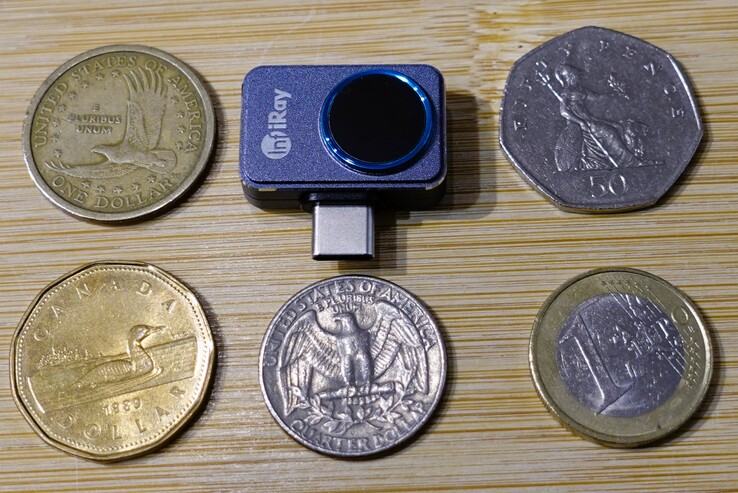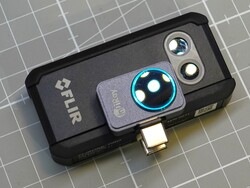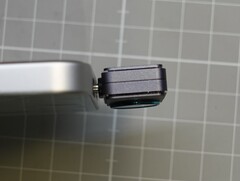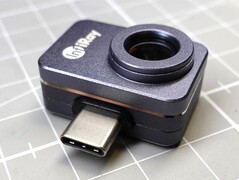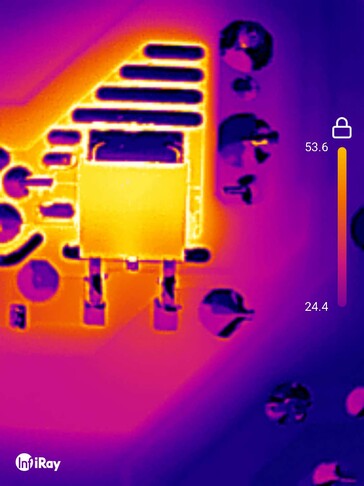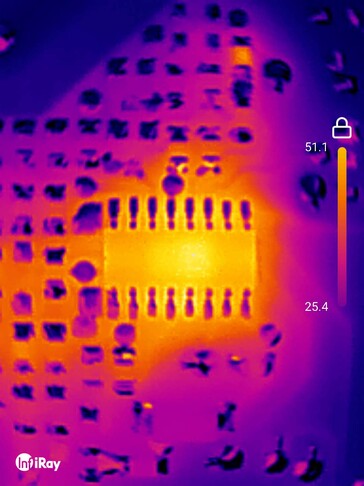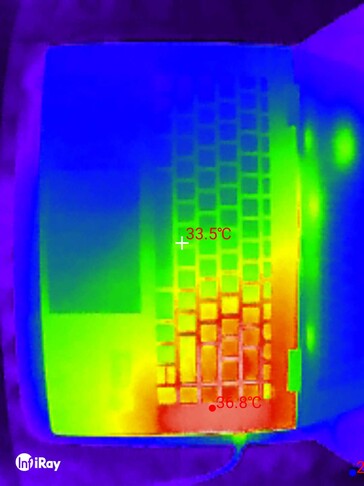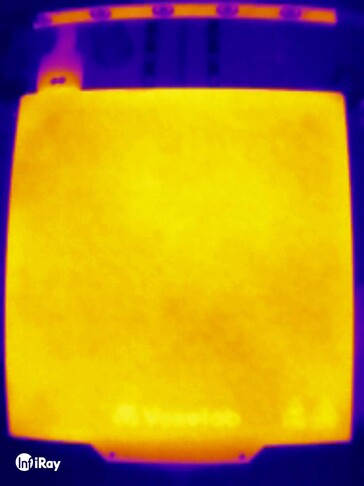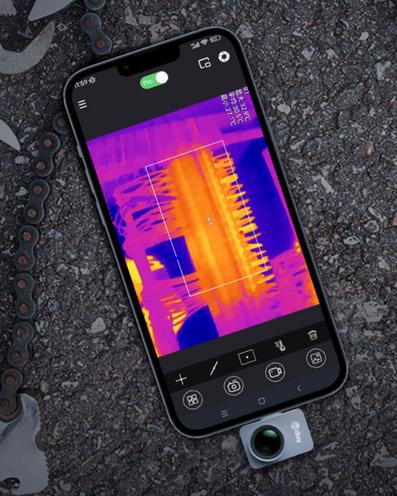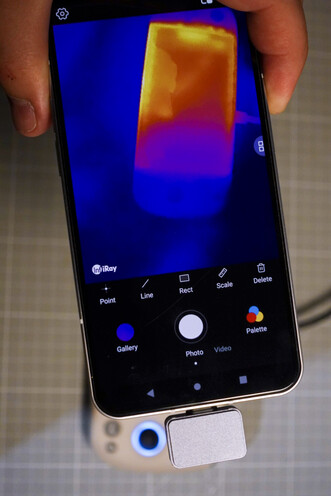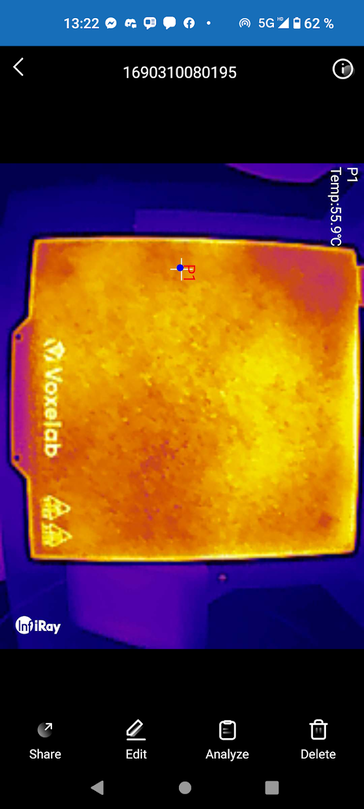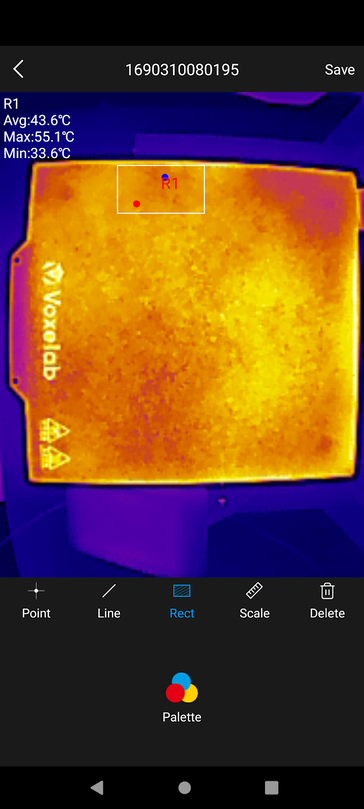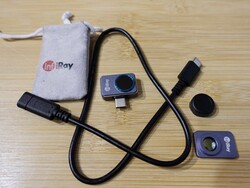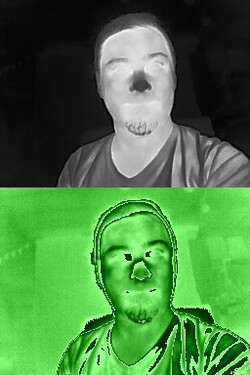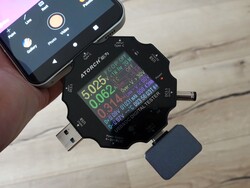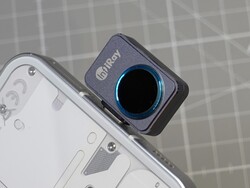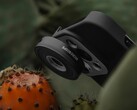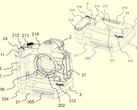InfiRay P2 smartphone infrared camera review: Tiny even with a macro lens
At Notebookcheck, we usually use the Flir One Pro from Teledyne for the thermal images in our laptop and smartphone reviews. Subsequently, this small infrared camera from Infiray also has to face our standard device in this test. It should first be noted that both the US manufacturer Teledyne and InfiRay from China are the current market leaders in thermal imaging. InfiRay has been innovating in thermal imaging camera power consumption and resolution for years, supporting open-source developers and offering a wide range of products for both industrial applications and end users.
The InfiRay P2 can boast an extremely compact case, a wide measuring range and an affordable price. In our test, we were impressed by the small camera, which is available with both Lightning and USB-C connectors. The corresponding app is a different story - it is not fully developed in some areas.
Technical data
| InfiRay P2 Pro | Infrared camera |
|---|---|
| Resolution | 256 x 192 -20 °C to 600 °C |
| Frame rate | 25 Hz |
| Lens | 3.2 mm with a viewing field of 56.0° x 42.2° |
| Macro lens | magnetically attached fixed focus at around 5 cm |
| Size | 27×18[26]×9.9 mm [with USB-C conection] |
| Weight | 13.5 g with macro lens and protective cap |
| Manufacturer | InfiRay |
| Provided by | Pergear |
Case
The InfiRay P2 Pro is a tiny device made from aluminum. The infrared camera's case is made entirely from this lightweight metal - with the exception of its USB port and lens. It is made well, leading to the small camera feeling robust and high-quality.
Thanks to built-in magnets, you can also attach a macro lens to the small case with which the smallest of objects can be depicted in high resolution. This makes the camera a little thicker, but it still looks like a miniature model compared to most other infrared cameras.
Picture quality
The InfiRay P2 Pro's thermal imaging sensor has a resolution of 256 × 192 pixels. This value is significantly higher than the resolution of the thermal imaging camera in the Flir One Pro, which we normally use for our tests. The camera from the top dog Teledyne only manages 160 × 120 pixels. As a result, you would think that InfiRay's camera would provide a better image. However, thanks to intelligent post-processing and a superior app, the Flir One Pro's images often look much better than the InfiRay P2 Pro in terms of image quality. Our test device, or more precisely its companion app, relies too much on the small thermal camera's superior image sensor.
Upon closer inspection, we noted quite a strong fisheye effect on the images we took. There have long been corresponding algorithms to straighten out these types of images if needed. It should also be mentioned that fisheye lenses in front of cameras can also have their advantages since they provide a true-to-area image instead of a true-to-angle image. Thus, determined average temperatures are more accurate in one area. However, the InfiRay app doesn't offer an image straightening feature.
In one area, the P2 Pro is capable of much more than the Flir One Pro - only our test device features a macro lens. This lets you view even the smallest of details in high resolution. We used the camera to help locate a fault on a circuit board and as a result, we were able to check the smallest of components. We would not have been in with a chance of doing this using the Flir One Pro. The macro lens has a fixed focus of about 5 cm.
Another thing which the InfiRay P2 Pro clearly does better is video recording. With a sample rate of 25 Hz, the infrared camera is able to record considerably smoother videos than our Flir. This higher frame rate is especially helpful when it comes to analyzing movable parts.
App
We are now coming to the InfiRay P2 Pro's biggest point of criticism. In the ads for this thermal imaging camera, you can see a very tidy-looking iOS app with lots of functions which simply don't exist on the Android app. Only upon close inspection do you finally notice the InfiRay marketing team's clever photoshopping skills. The time display shouldn't get cut off on any iPhone display.
As a result, our high expectations were not met - but the app does still feature quite a few interesting functions that go far beyond just creating thermal images. They also give you lots of options for analysis.
Interesting are the functions that allow the user to delimit certain areas and display the minimum, average and maximum temperature individually. Before recording, the emissivity factor of a surface can be set. This factor is important for storing accurate measurements of objects.
The strength of the app should lie in the post-processing of these pictures, but the manufacturer has clearly made a mistake here. The emissivity factor which is set before the picture is taken is set to the default value of 0.95. Unfortunately, this means that no measurements can be taken in post-processing. As a result, accurate measurements are no longer possible in post-processing. The following pictures clearly show how much the temperature measurements of the recording and analysis function differ.
Scope of delivery
Aside from the infrared camera and macro lens, the scope of delivery also includes a small lens cap, a bag to keep the camera in, as well as a USB extension cable. The InfiRay P2 Pro can also be connected to a computer through its USB cable.
PerGear has also given us a microfibre cloth to clean the camera with.
The InfiRay P2 Pro is recognized by the PC as a normal webcam. There, it just displays the raw data - so no temperature measurement. The resolution of the PC recordings is 256 × 192 pixels. Videos are recorded at 25 Hz, which means they look very smooth. Only occasionally calibrating the camera causes short jerks.
Example video:
Power consumption
The InfiRay P2 Pro doesn't have its own built-in battery, so it has to draw its power from its host. According to the manufacturer, it takes about 350 mW from your smartphone, tablet or laptop battery. In all of our tests using the Atorch USB Tester and other measuring devices, we actually even noted that the infrared camera consumes less than this value. With an additional load of 314 to 320 mW, a typical smartphone battery, which holds about 15 Wh, should therefore last for quite a few hours.
Pros
+ small and practical even with macro lens
+ manages without built-in battery
+ low power consumption
+ high resolution
+ inexpensive
+ can also be used on PC
Cons
– fisheye effect
– Android app not fully mature
Verdict
The InfiRay P2 Pro is a particularly small infrared camera which delivers good picture quality. Its weaknesses lie in the accompanying Android app which we tested. The manufacturer should really update it in order for it to keep up with the standard advertized on the website. The camera's strengths include its low power consumption, high resolution and high 25-Hz frame rate. This lets the device take infrared videos and not just pictures. As a result, the tiny smartphone accessory can be implemented for a whole range of uses. Thanks to its compact build and stable case, you won't have to worry about the camera's long-term durability.
The InfiRay P2 Pro delivers high-resolution infrared images for a surprisingly small price.
Despite all the camera's advantages in terms of runtime, resolution and small size, we also have to state that the InfiRay P2 Pro is not suitable for our intended use. Its saved emissions aren't relevant to the requirements of our test reports in the field of laptops and smartphones. On the other hand, the thermal imaging camera with its fluid video recordings also offers us some new analysis options that we want to use in the future, especially when reviewing 3D printers.
Price and availability
Transparency
The selection of devices to be reviewed is made by our editorial team. The test sample was given to the author by the manufacturer free of charge for the purposes of review. There was no third-party influence on this review, nor did the manufacturer receive a copy of this review before publication. There was no obligation to publish this review. As an independent media company, Notebookcheck is not subjected to the authority of manufacturers, retailers or publishers.
This is how Notebookcheck is testing
Every year, Notebookcheck independently reviews hundreds of laptops and smartphones using standardized procedures to ensure that all results are comparable. We have continuously developed our test methods for around 20 years and set industry standards in the process. In our test labs, high-quality measuring equipment is utilized by experienced technicians and editors. These tests involve a multi-stage validation process. Our complex rating system is based on hundreds of well-founded measurements and benchmarks, which maintains objectivity. Further information on our test methods can be found here.


